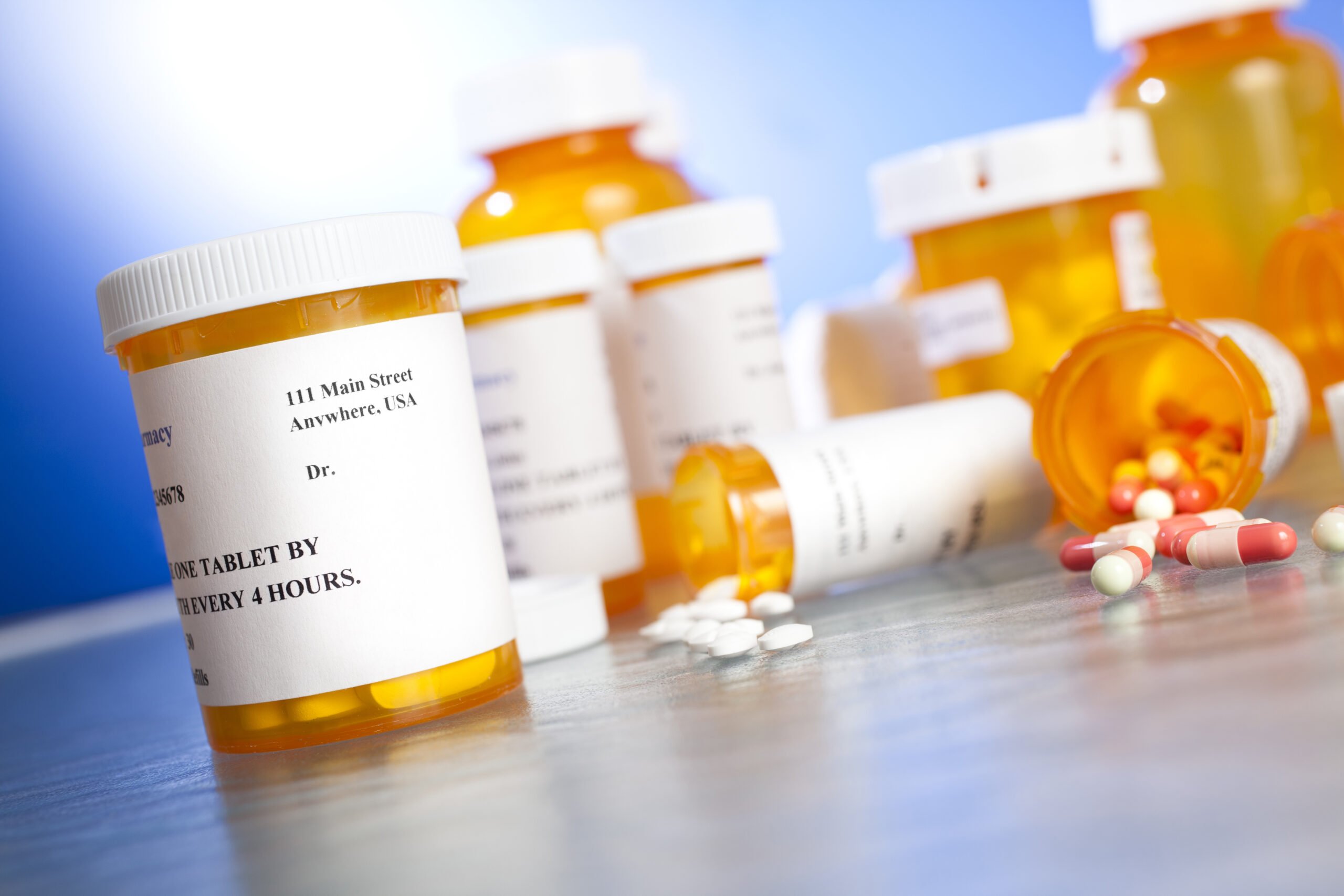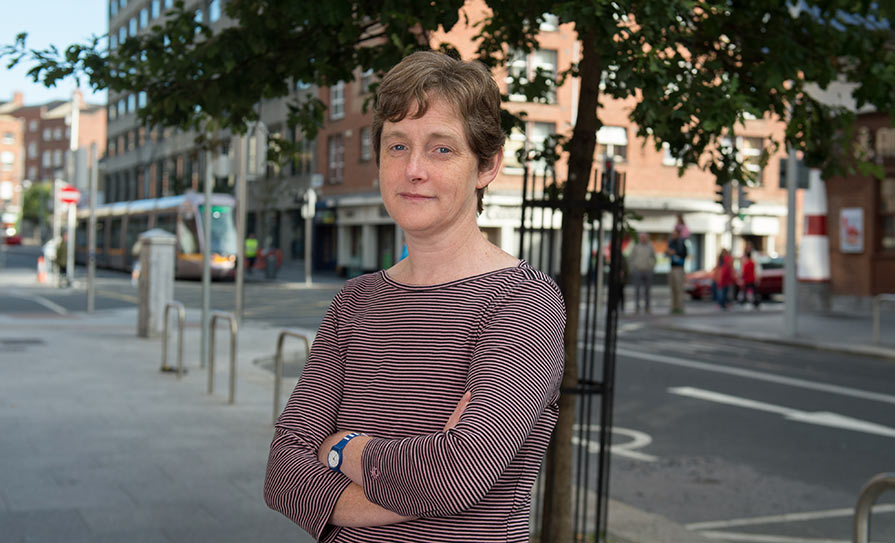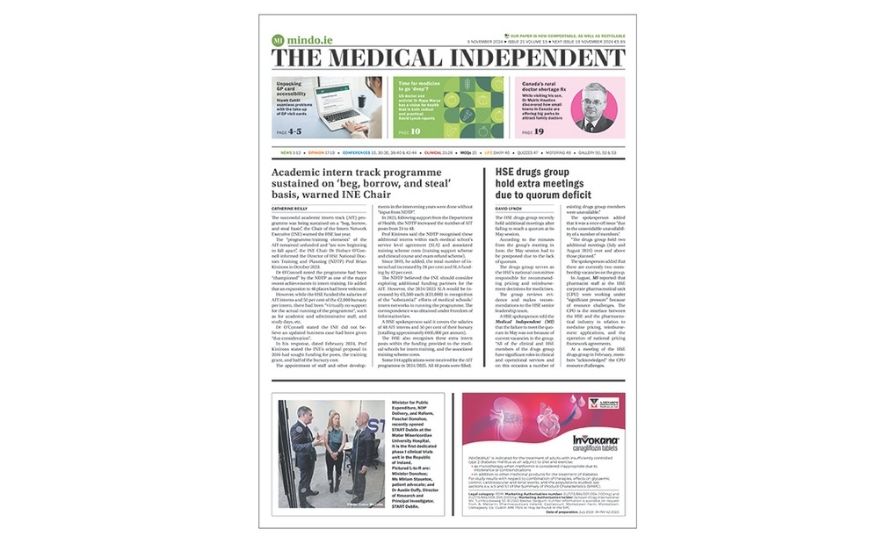An internal HSE document has highlighted significant gaps in the area of medication safety and called for greater focus on the issue. Paul Mulholland reports
As reported recently in the Medical Independent (MI), serious concerns about medication safety were the subject of discussion during meetings of the HSE’s safety and quality committee late last year. A report on the issue, obtained by MI through Freedom of Information (FoI) law, was presented at the committee’s meeting on 13 October. According to the meeting minutes, also seen through FoI, the committee stressed that the data provided was “stark and of great concern”.
The report was prepared by Ms Ciara Kirke, HSE Clinical Lead, National Medication Safety Programme, national quality improvement team. It stated that Irish research and data highlights that medication safety breaches are often “the rule and not the exception” (see panel for medication safety issues at Beaumont Hospital, Dublin).
According to this research, adverse drug events (ADEs) account for 8.8 per cent of general emergency admissions and 26 per cent in over-65s. Studies have shown 20-to-53 per cent of community-dwelling people aged over 65 are on at least one potentially inappropriate medicine (PIM) and 38-to-45 per cent had at least one potential prescribing omission. Hospitalisation is associated with increased polypharmacy and disimproved medication appropriateness and is the factor most associated with inappropriate prescribing in community-dwelling older adults.
“We are aware of six reports of fatal medication-related harm occurring in 2019 and 2020, three of which relate to anticoagulant management,” according to the report.
“2019 incident reporting data to NIMS [national incident management system] includes 1,089 medication incident reports classified as involving some level of injury (7.5 per cent of all medication-related reports); however, on a brief review, it is apparent that some of the 10,067 reports classified as ‘no injury’ also involve harm. Notably, many of the 3,434 incident reports (23.5 per cent) classified as near misses involve intervention by a clinical pharmacist to intercept the error and prevent harm to the patient.”
Prevention
At least half of medication-related harm is potentially preventable, the report outlined. “Most serious harm is associated with limited classes of ‘high-risk’ medication,” it stated. “This denotes medication where harm is more likely to result with its use or omission. These groups include anticoagulants and antiplatelets, antimicrobials, insulins, anti-inflammatory drugs (NSAIDs) and diuretics.”
Medication safety has been the subject of various recent reports. HIQA highlighted hospital-level and national recommendations in an overview of the medication safety monitoring programme in 2018. It has restated many of these recommendations recently in a five-year summary of the full monitoring programme.
Among the recommendations are that a national plan should be prepared for developing comprehensive clinical pharmacy services. The plan should set out the desired model of care and the appropriate resources to ensure consistency across hospitals, according to HIQA. The State Claims Agency has also issued a series of reports that have addressed some of these issues.
Current initiatives and gaps
The HSE has committed to reducing medication-related harm and improving medication safety in its patient safety strategy. The World Health Organisation (WHO) global patient safety ‘challenge’, Medication Without Harm, aims to reduce serious, avoidable medication-related harm by 50 per cent over five years. The WHO invited countries to prioritise medication safety at national level and appoint a national coordinator over the area.
The National Medication Safety Programme (Safermeds) sits within the HSE quality improvement team under the remit of the Chief Clinical Officer. It provides clinical and quality improvement expertise and support for the system in addressing medication safety deficits.
The programme is aligned with the WHO’s priorities, collaborating to reduce medication-related harm associated with ‘transitions of care’, polypharmacy, and high-risk situations. There are multiple streams of work to support safe medication use, including coordinating production of HSE clinical guidance; HSE public information; collaboration to support community pharmacy via the community pharmacy contingency group and the ICGP; involvement in supporting addiction services; e-health developments; and medicines contingency planning.
Work on improving medication safety at transitions of care is a priority. This work includes access to Primary Care Reimbursement Service data (dispensed medication) to facilitate pharmacist medication reconciliation, utilising Healthlink in the transfer of clinical information, and legislative changes to facilitate smoother communication.
However, the report noted that structures to facilitate oversight of safe medication use, and to monitor and improve performance, are not defined within the HSE or Department of Health.
“There is no agreed national or HSE strategy or plan to improve medication safety or reduce medication-related harm and it is not an agenda item at any leadership level meetings in the HSE or the Department of Health,” according to the report.
“This is in contrast to financial considerations with medication, where we have strong structures and oversight by the high-level drugs committee.”
The report concluded there is “ample evidence of the need for concerted action to reduce medication-related harm in the HSE and nationally”. A proposal for action was to be shared at a future meeting, following its consideration at the HSE executive management team (EMT).
New group
The issue was discussed again at a meeting of the committee on 16 December. Dr Philip Crowley, HSE National Director, Quality Improvement, provided an update on the decision of the EMT. The EMT had endorsed the establishment of an integrated action group, reporting to the Chief Clinical Officer, to oversee implementation of recommendations and best practice initiatives to address the reduction in medication-related harm.
Dr Crowley highlighted that “there are gaps in the services available nationally to reduce medication-related harm and that the appropriate HSE structures and approach to plan and deliver reductions in medication-related harm are being considered”.
“The committee recognised medication safety as a significant patient safety issue and welcomed the proposed establishment of the integrated action group, noting that the recommendations from HIQA’s medication safety monitoring programme in public acute hospitals should be included in the terms of reference of the group if possible,” according to minutes.
“The committee emphasised that the utilisation of e-health procedures should play a key role in the implementation of the medication safety strategy.”
A HSE spokesperson told MI the new group is still in the process of being established. It will be co-chaired by National Directors for Quality Improvement and Acute Operations.
“The main priorities of the group will be strengthening clinical pharmacy support for safe medication use; high-risk medicines; and medication reconciliation between primary and secondary care,” the spokesperson said.
Medication safety at Beaumont Hospital
The issue of medication safety also requires local responses, in addition to national initiatives. The issue was discussed at a meeting of the clinical governance committee of Beaumont Hospital, Dublin, on 10 June 2020. The minutes of the meeting were obtained by the Medical Independent through Freedom of Information law. During the meeting, the completion of a medical error pathway was discussed.
“It was noted there has been an increase in the medication errors reported amongst medical staff and the development of this pathway will introduce a structured method for the review of such incidents and the means to address deficits,” according to minutes.
“It was noted there are challenges with respect to pharmacy staff posts and this impacts the support that can be provided.” A spokesperson for Beaumont Hospital said the pathway is based on the HSE incident management framework. It includes the use of an “incident decision tree” in the form of an algorithm, which assists managers in making decisions around the actions required after an incident.
“This helps to identify causative factors and ultimately learning that is used to improve procedures and processes,” according to the spokesperson. “The medication safety officer uses the tool as part of the preliminary review of medication safety incidents and links with the relevant clinical lead as appropriate.”
There was also a discussion of a medication safety report for the first quarter of 2020 during the meeting.
It was noted there was a variation in the level of reporting of medication safety incidents over the quarter, due to the impact of Covid-19. It was also stated that overall trends in the professions reporting medication incidents remained the same, with pharmacists and nurses being the main reporters.
The meeting heard that severity and outcomes of the medication incidents as reported during the quarter mirrored those of 2019. The majority of incidents were intercepted before there was any patient harm. A meeting of the committee in March 2020 heard there were two incidents of “significant harm” reported in the final quarter of 2019. One of these incidents was identified as “drug-related harm in a patient in whom a dose error was also identified resulting in patient death”.
No additional details were received from Beaumont Hospital in regard to this incident.
“All medication safety incidents are managed in line with the Beaumont Hospital incident management policy,” according to its spokesperson.
“When a medication safety incident occurs, immediate actions include reviewing the patient and taking any possible corrective actions.”













Leave a Reply
You must be logged in to post a comment.